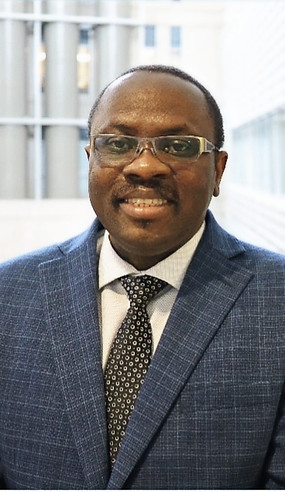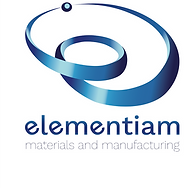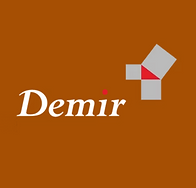
Welcome
Welcome to the inaugural Prairie Advanced Manufacturing Meeting (PAMM)—a two‑day conference uniting researchers and industrial innovators in advanced manufacturing. Join us at the University of Alberta, Edmonton, from July 31 to August 1, 2025 to exchange knowledge, spark collaborations, and discover networking and opportunities in the Prairies.

Why Attend?
-
Cross‑Prairie knowledge bridge
Hear success stories from universities, colleges and polytechnics collaborating with industry.
-
Real‑world impact
Sessions focusing on advanced manufacturing, energy, mining, logistics and sustainable materials—sectors that drive the Prairie economy.
-
Tour world‑class facilities
Experience live demos in the ADaMS Lab and the U of A nanoFAB.
-
Grow your network
Meet peers, mentors and potential partners in an intimate, single‑track setting.
-
Explore public–private partnership opportunities
Collaborate with industry through joint research, funding programs, and innovation-driven partnerships.
-
Celebrate excellence
Compete for the Best Paper, Best Poster, and People’s Choice Awards.

Invited Speakers

Olanrewaju Ojo
PhD, P.Eng.
Professor and Head, Department of Mechanical Engineering
University of Manitoba
Title: Unlocking Performance: The Critical Role of Post-Processing in Additive Manufacturing of Aerospace Superalloys
Additive Manufacturing (AM), has emerged as a transformative technique in aerospace manufacturing, offering significant advantages in design flexibility. However, the application of AM to critical aerospace components still faces substantial challenges related to achieving optimal mechanical performance. This presentation highlights the critical role of post-processing in mitigating detrimental
property degradation in AM-processed aerospace superalloys, with a specific focus on ATI 718Plus. Recent investigations into the AM of ATI 718Plus reveal a pronounced softening in the as-built condition, primarily due to microstructural deficiencies induced by elemental micro-segregation during the rapid solidification inherent to the AM
process. Thermodynamic simulations and advanced electron microscopy/spectroscopy analyses indicate that this softening arises from suppressed re-precipitation kinetics and a diminished volume fraction of key strengthening phases. Importantly, this presentation demonstrates how tailored post-process thermal treatments can effectively reverse the adverse effects of micro-segregation by promoting solute redistribution and restoring phase stability. The theoretical predictions are validated through experimental results, which show a complete recovery of mechanical properties following appropriate heat treatment. By showcasing a robust strategy to eliminate softening in AM-produced ATI 718Plus, this talk underscores the broader value of post-processing as an essential enabler of high-performance aerospace components. The insights presented are relevant not only to ATI 718Plus but also to the broader class of precipitation-strengthened superalloys, thereby reinforcing the indispensable role of integrated post-processing in realizing the full potential of additive manufacturing in aerospace applications.
Kimberley Meszaros
P.Eng, MSc, WE
Professional Engineer
InnoTech Alberta
Title: Navigating the Codes & Standards for Additive Manufacturing
The audience will be shown the current state of Codes and Standards related to Additive Manufacturing. Codes and Standards will include snapshots from various standards development organizations including ASTM, ISO, API, ASME and CSA.

Akindele G. Odeshi
PhD, P.Eng. FEC
Professor and Associate Dean Academic, College of Engineering
University of Saskatchewan

Title: Development and Characterization of Advanced Materials for Protection Against Ballistic Impact and Explosive Loading
This research focuses on the design, development, and characterization of advanced materials for protective armor applications. The primary objective is to create lightweight, high-performance armor systems capable of providing enhanced protection against a range of ballistic and explosive threats. A combination of microstructural optimization, dynamic mechanical testing, and detailed microscopic and
spectroscopic analyses is employed to investigate material responses, including failure mechanisms such as adiabatic shear banding. The materials studied include monolithic metallic alloys, nanostructured composites, functionally graded materials, and hybrid systems. The research systematically examines the influence of manufacturing parameters, material composition, and laminate architecture on the ballistic performance of composite armor. Results demonstrate that well-designed composite systems can outperform traditional armor materials in ballistic resistance while offering significant weight savings. These findings have important implications for the development of next-generation protective systems for military, law enforcement, and civilian applications
Madison C. Feehan
B.Com
CEO & Founder
Space Copy

Title: Space Copy: Technologies for ISRU Enabled In-Space Manufacturing
The use of additive manufacturing for in-space manufacturing (ISM) of infrastructure, precision tooling, and repair parts are of interest to lunar colonization efforts pioneered by space agencies and the greater science community from both a scientific merit perspective, and an economic perspective for reducing lunar resupply payload cost, and frequency. The development of advanced lunar hardware introduces an improved method for additive manufacturing, and the integration of
autonomous powered material characterization, beneficiation, and qualification sub-systems, allows for the identification, handling and effective use of lunar resources for off-world construction activities. However, it is noted that the new space race has introduced the need for technology to be developed at quicker rates, while ensuring adherence to international standards, regulations, and ethical guidelines for sustainability. In order to successfully shape the next generation of space hardware technologies, it is essential to explore the development of technologies that will serve as the foundation for lunar colonization and to provide support through funding, facility access, and global partnerships to ensure the safe, rapid, and responsible development of the Moon and Mars as both exploration sites and protected areas of natural importance. As additive manufacturing serves as a precursor to future technology enablement and long-term sustained human presence on the lunar surface, we aim to explore 3D printing as a core method of infrastructure production using regolith and lunar-derived materials as resources for off-world construction. UN COPUOS identifies various sustainable development goals that coincide with the invention of technologies to support lunar colonization, with the aim of visibly demonstrating successful prototyping, testing, and initiation of these technologies to ensure a thriving lunar economy. Space Copy serves as an example of private industry leaders striving to conceptualize lunar manufacturing using ISRU, combining materials science with robotics, and effective Positioning, Navigation and Timing (PNT) techniques for near real-time tele-operational capabilities. With validation of the company’s technology well underway, the future development of lunar hardware for regolith-based manufacturing holds potential for both crewed and uncrewed missions, and extends itself to applications for terrestrial manufacturing in extreme environments for defence applications. This discussion centres around education of current initiatives and technologies being developed for lunar-enabled additive manufacturing, chronicling historical and current traction, while also highlighting the need for developing an internationally upheld framework for initiating development, testing, launch, and operation of core space hardware that will significantly contribute to Artemis and the goal of sending humans back to the Moon on a permanent basis on a visible recognizable scale.
Abba A. Abubakar
PhD, mASME, rCOREN
Assistant Professor, Department of Mechanical Engineering
King Fahd University of Petroleum and Minerals

Title: Quantitative Modeling of Microstructure Evolution in Multi-Material Additive Manufacturing
Multi-material additive manufacturing offers exciting opportunities for creating hybrid structures with tailored properties by integrating dissimilar materials. However, understanding and controlling microstructure evolution at material interfaces remains a key challenge due to complex thermal and compositional dynamics. Here, the audience will be shown a quantitative modeling. framework that
integrates thermal field and phase-field simulations to predict grain nucleation and growth during multi-material metal additive manufacturing. The thermal field is resolved using commercial finite element/finite volume-based heat transfer simulations platforms (such as FLOW-3D, COMSOL, ANSYS, etc.) capturing detailed melt pool dynamics and transient temperature gradients. The resulting thermal profiles are then coupled into phase field modeling tools to simulate grain nucleation, competitive growth, and interface evolution. By linking process conditions to resulting microstructures, the approach could provide important insights into interfacial phenomena, grain morphology, and performance characteristics of hybrid components. The work highlights how predictive simulations can support the design and optimization of next-generation multi-material components across advanced manufacturing sectors.


Proceedings
Accepted extended abstracts, presented at the conference, will be included in the conference proceedings. The abstracts will be published open access under CC-BY-NC in the Education and Research Archive (ERA) of the University of Alberta and will have a DOI number.
In collaboration with Alberta Advanced Manufacturing International Hub







.png)
